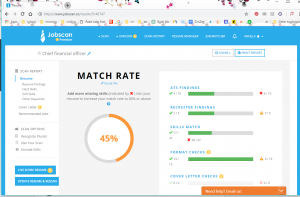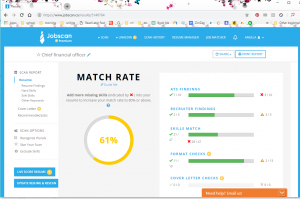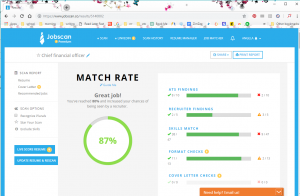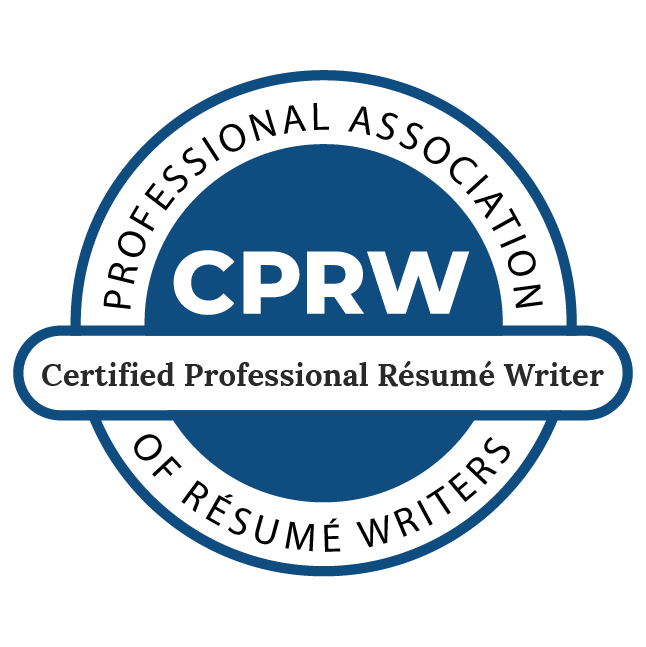You’ve paid good money for a professionally written resume. It’s modern, clean, readable, and accomplishments-driven. It’s perfectly error-free, and it represents your unique professional brand.
You’re ready to shoot that resume to the next good-fit job opening you see, right?
Wrong.
No matter how well-crafted your resume, it isn’t yet ready for prime time.
The reason is simple: ATS.
Head here for a quick refresher on what ATS is and how companies use it in the hiring process. In short, you should never apply for a posted job without first adapting your resume to include the keywords from the post.
Many job seekers I work with find ATS systems frustrating and frightening. After all, ATS is the gatekeeper that could easily prevent you from even being considered for a job you know you’d thrive at.
But optimizing your resume for ATS is a doable endeavor. It just takes a little know-how and a little extra work.
The process for optimizing your resume to ATS also gives you real benefits throughout the application and interviewing process.
That’s because optimizing for ATS means taking a close look at the company’s lingo and preferences.
For example, does your target company call their customers users or guests, or partners? Using that same verbiage in your resume and interview shows that you get the company and that you’re a candidate willing to do their homework and go the extra mile.
Research shows that “the majority of ATS cannot match past tense, plurals, synonyms, or word variations consistently.” In fact, variations like “masters degree” and “master’s degree” can even produce different results. (Read more here.)
To maximize your match, it’s essential to edit your resume each time you send it out to make sure the listed keywords are included. So if your resume lists “cross-functional team leadership” but the post mentions “collaborate across teams,” tweak your resume to match the post.
Here are some other keyword switcharoos that can have a big impact on your resume’s success rate:
Customer experience ⇨ customer success
CRM ⇨ Salesforce
Business analytics ⇨ analytics strategy
Product demonstrations ⇨ client-facing presentations
Go-to-market strategy ⇨ Marketization
One of the most frustrating things about ATS is that candidates have no way of knowing how closely their resume is aligning with the keyword terms ATS will be using. Until now.
Enter JobScan. JobScan allows you to upload your resume and a job post side by side. Then it analyzes both and gives your match a percentage grade. Aim for 80% match to make sure you pass the ATS screen and that your resume reaches a real, live human.
Here’s an example: One of our recent clients submitted his existing resume and a job post of interest. We plugged them both into JobScan. The original resume scored a 45% match. (That’s actually not bad—many resumes score in the 20s or 30s.)

This job seeker was smart enough to come to the professionals at Upword Resume for a resume refresh. You might expect that his new, professionally written resume would easily exceed the 80% benchmark.
Nope.

After we worked our magic, the resume still scored only 61%. A marked improvement, but still not high enough to ensure his application makes it past ATS to reach a real, human reader.
His new resume was a great resume for his field, but it wasn’t yet aligned with this particular job post.
Using the JobScan report, we identified keywords from the post not present in the resume. Then we found places to work them in. Sometimes this involved rephrasing a sentence. Sometimes it meant adding the keywords into a list of skills. With about 10 minutes of work, we got this resume to 87% match.

Now, does changing the word collaborate to collaboration really make you a better candidate. Of course not. In a very real sense, optimizing for ATS is just playing the game. Some people find that frustrating. But it’s how the system works, and the first marker of a strong job candidate is the ability to understand the landscape and play by the rules.
Here’s one last caution about optimizing for ATS: Don’t go overboard.
Remember, you’re writing a resume for two audiences: The ATS system and the human recruiter or hiring manager who will evaluate your resume once it gets past ATS. And lucky for you, our ELEVATE and ALTITUDE packages include our ATS Guide, which answers all your ATS-related questions and walks you through exactly how to customize a Upword Resume to a job post.
Don’t alienate your human reader by creating a dense, overly jargon-laden resume.
Ready to take your career to the next level? Reach out to the pros at Upword Resume.


